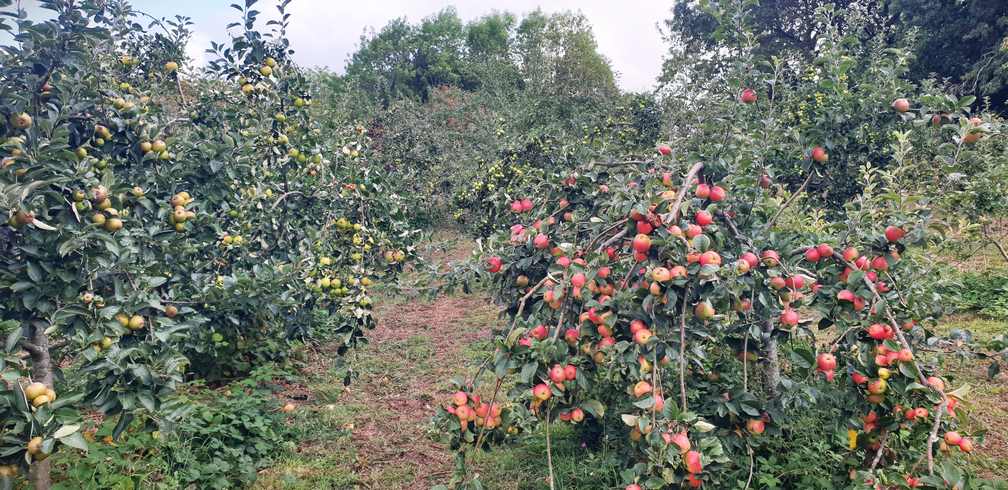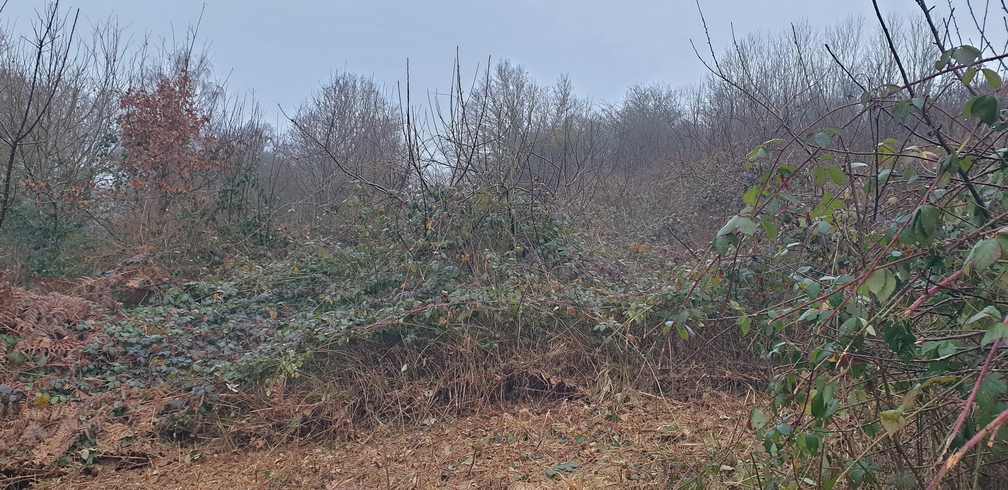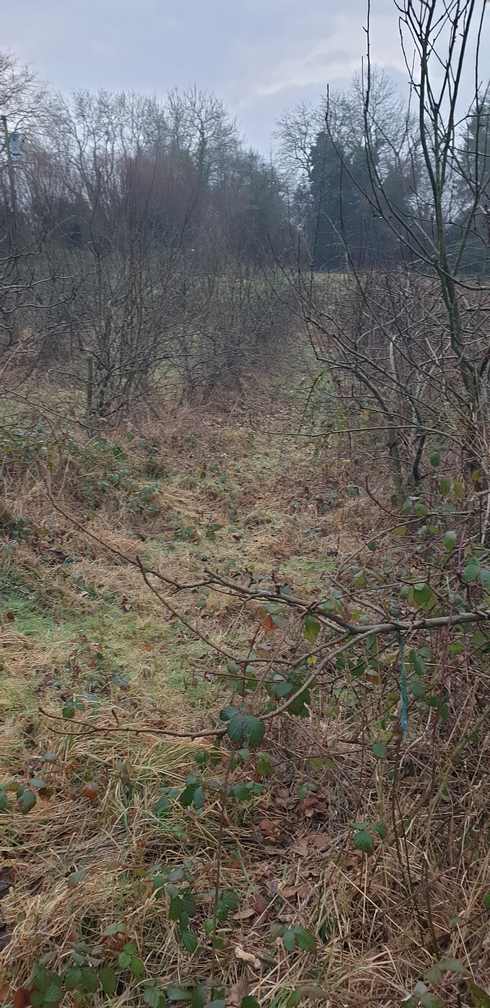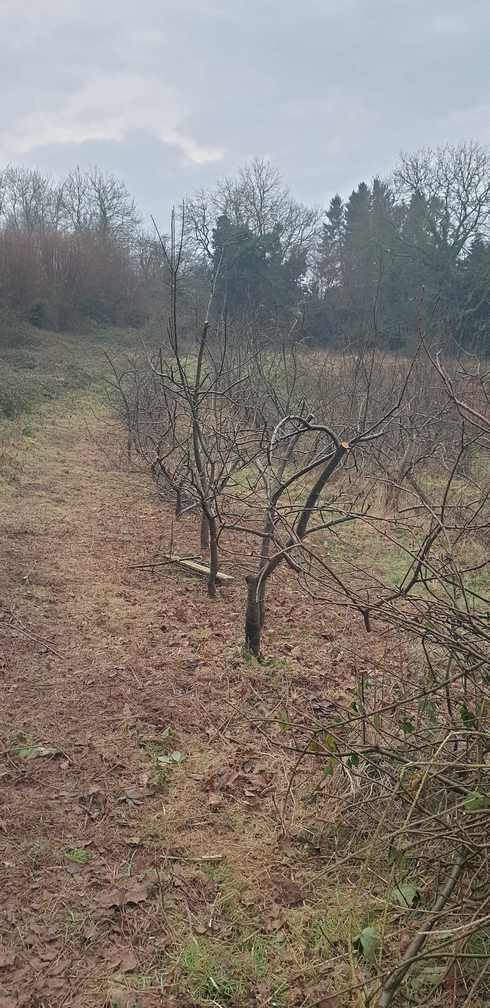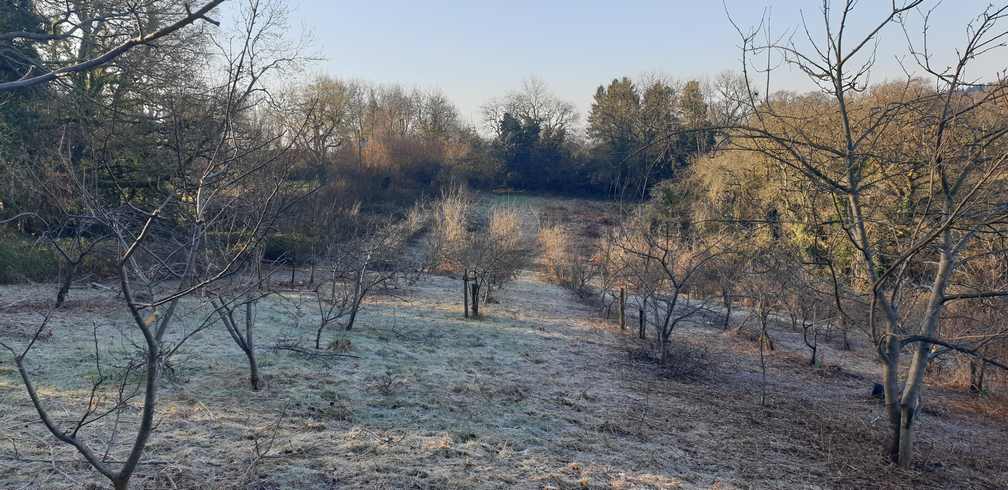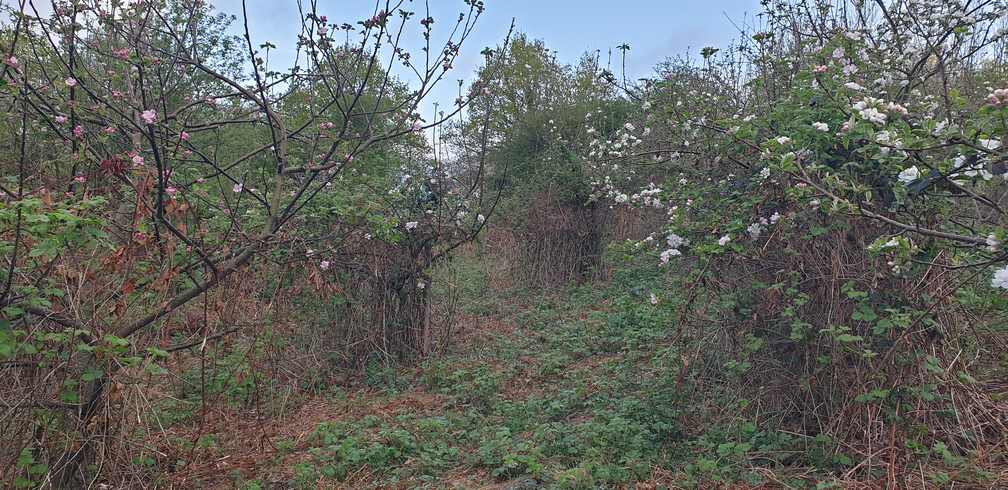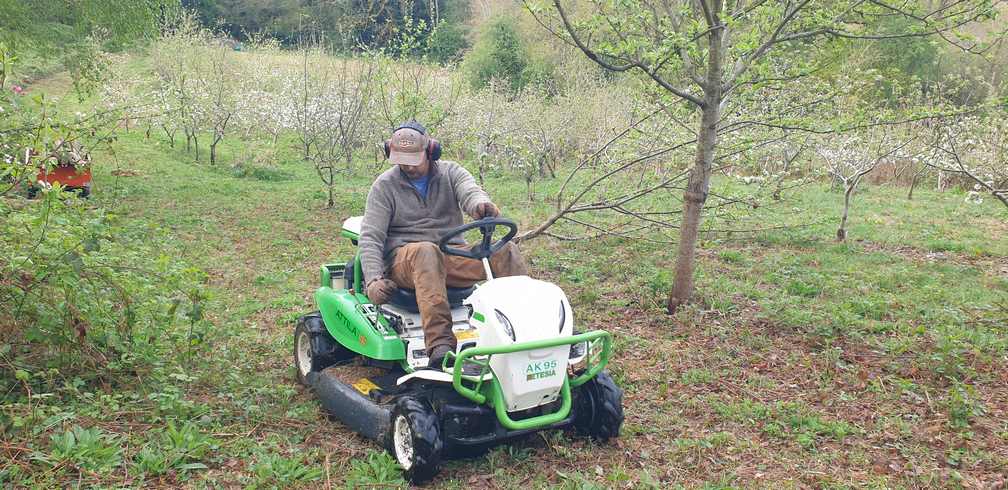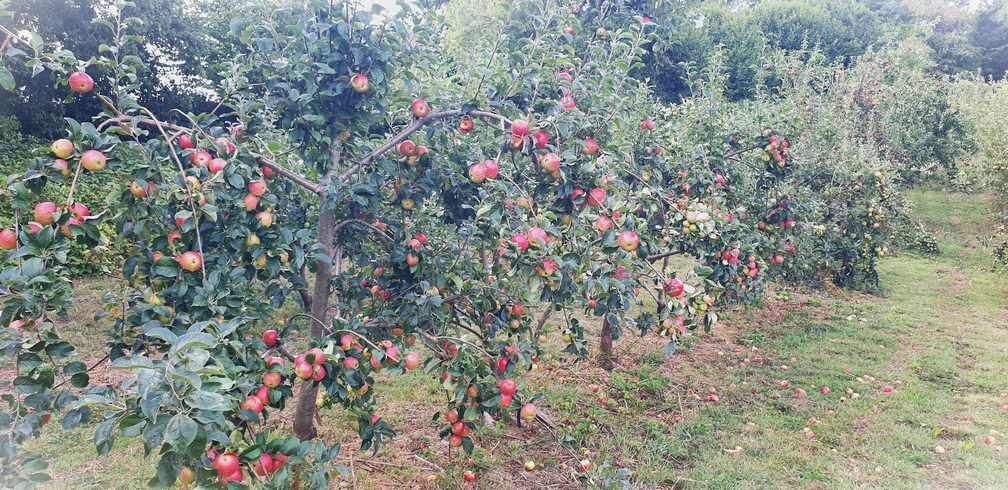Winter 24/25 the team were tasked with taking on an abandoned fruit orchard in the village of Gwehelog in Monmouthshire.
A 3 acre hillside, around two thirds planted up, succesively, with maybe 300 closely planted fruit trees. The majority are apples, with a few perry pears, plums and walnuts, all lost in a thicket of recent neglect. For the original owners a challenging project that fell by the wayside, ambitiously inherited by Gareth and his easily intimidated team.
Historically, orchards (like one we look after near Llantilio Crossenny) were usually planted up with standard trees, on their own roots or vigorous rootstocks, with wide spacing between individual trees (30ft or so). Modern orchards, particularly commercial ones are now planted up much more densely, with less vigorous rootstocks needing different pruning and training methods. Here at Gwehelog we are finding labels with various rootstocks – alot of the semi-dwarfing M26 but also the semi-vigorous M116. The M26 with its restrictive root system needs permanent staking and is too weak for this location. M116 much more appropriate and going forward we will be selecting these trees to develop. Here the trees are mostly planted 1.5m apart. The rootzone has been laid with carpet (obviously handcrafted with 4 ply yarn). Not an approach that I would ever recommend (to put it politely). Dead soil, leaching toxins and completely useless as a weed control method. Not a fan.
The years of neglect means the supports have failed, the mesh guards are entangled with bramble and rodents. Trees, if not toppling over are growing into each other and the carpet is now under a layer of root, litter and mud. I’d say thats why Harry looks so grumpy, but to be fair he always looks like that.
The first task was to brushcut the 6ft high bramble that was an impenetrable thicket over most of the site
The brushcutting could only get you so far, the bramble, scrambling through every tree needed removing by hand. This dense planting requires each tree to be pruned and trained as spindle-bush forms; a central leader with short radiating side branches.
A ride-on brushcutter absolutely essential to maintain the orchard floor a grassland not scrubby tall herb evolving into thicket, copse and woodland.

